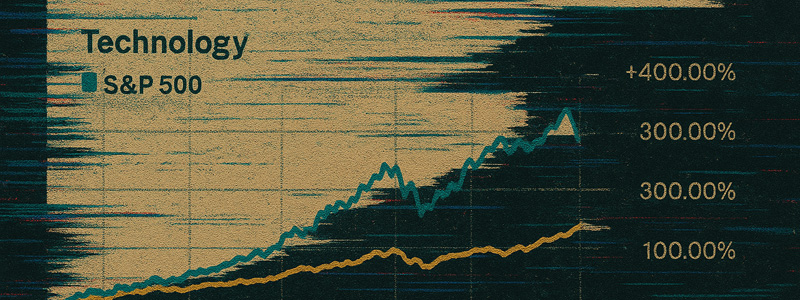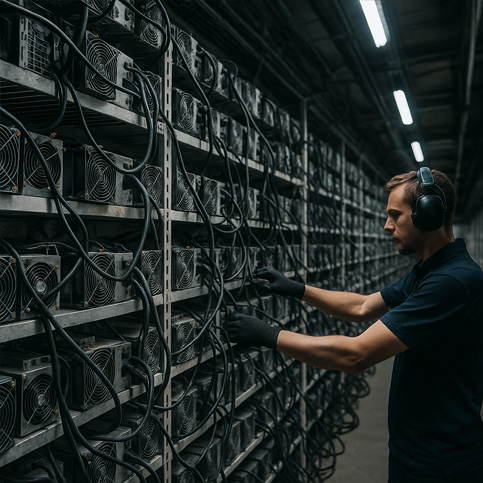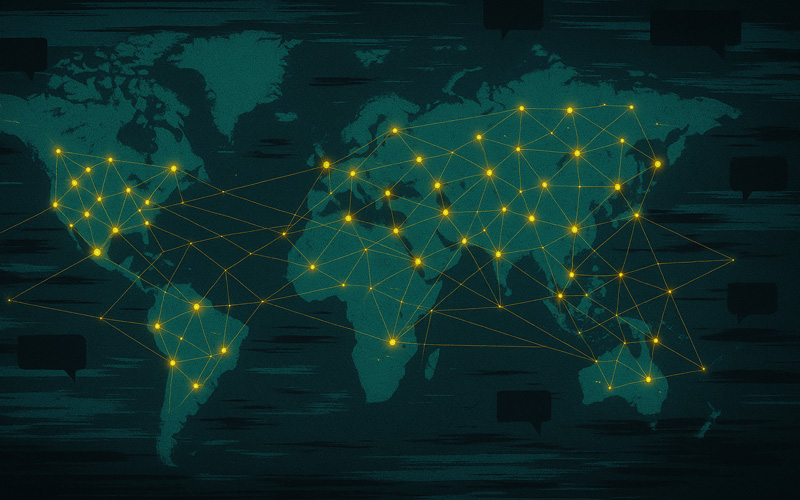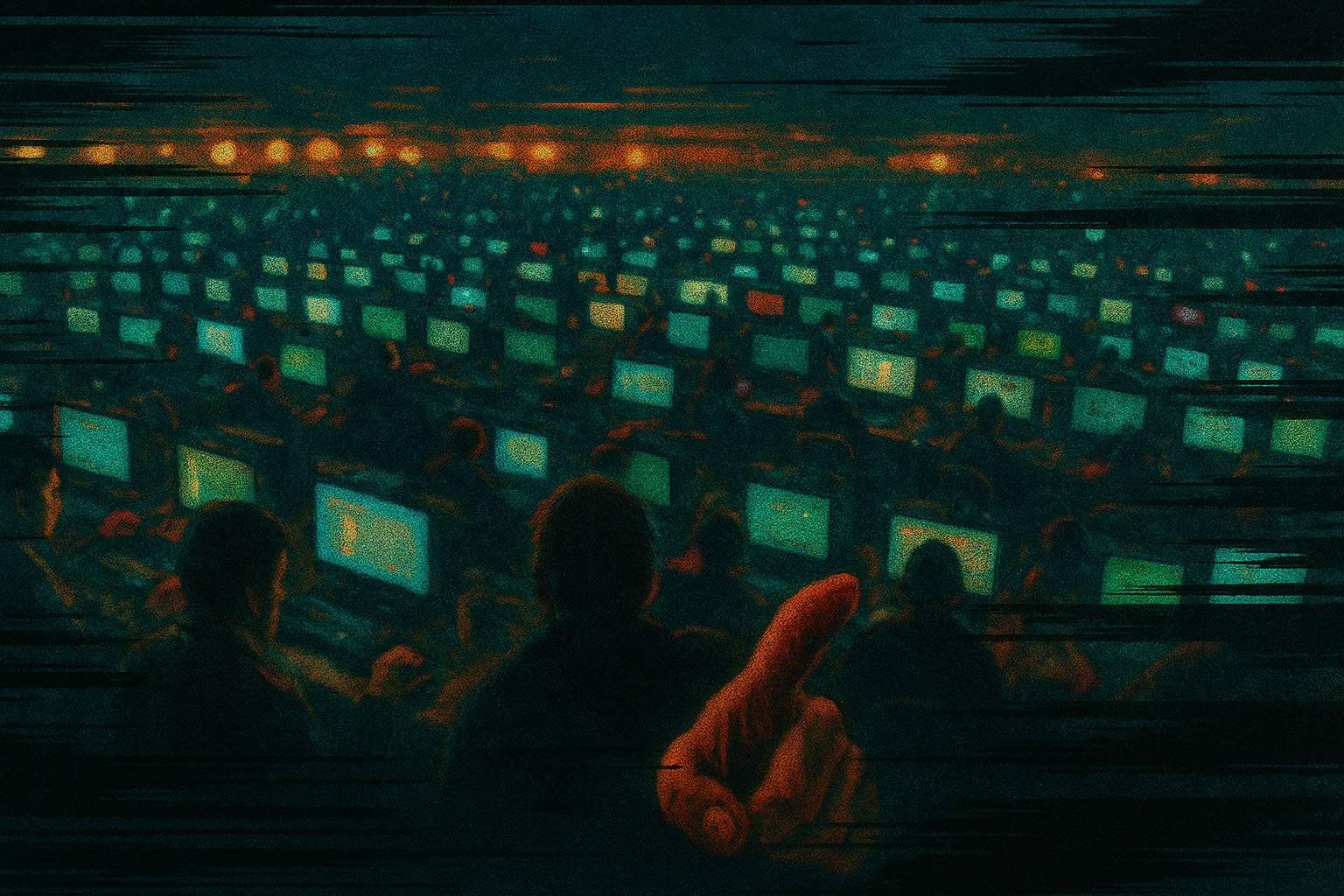 Artificial Intelligence (AI) is a transformative force with the power to reshape every aspect of our
lives—from healthcare and finance to transportation and beyond. While AI breakthroughs solve complex problems
and automate tedious tasks, it also introduces urgent challenges: job displacement, privacy, bias, and the
moral weight of machine-driven decisions.
Artificial Intelligence (AI) is a transformative force with the power to reshape every aspect of our
lives—from healthcare and finance to transportation and beyond. While AI breakthroughs solve complex problems
and automate tedious tasks, it also introduces urgent challenges: job displacement, privacy, bias, and the
moral weight of machine-driven decisions.
The speed of AI development is accelerating and unfortunately the people are not keeping up with the pace.
Thus we risk that the AI systems we build are not aligned with values and priorities of broader community.
We believe a different path is necessary—one rooted in open-source collaboration and decentralized AI.
By distributing blockchain incentives, every contributor—whether providing data, writing code,
or advocating for the network—should share equitably in the value they help create. Decentralization not only
disperses power and enhances privacy and security but also guards against misuse and censorship.
 Just as early Internet pioneers hosted websites on home servers and cypherpunks ran Bitcoin nodes on personal
machines, today's Web3 ethos empowers us to build a peer-to-peer AI cloud. By harnessing idle GPUs and uniting
the global Web3 community, we equip developers with the tools to create truly open-source models—aligned in
both purpose and incentive. Our long-term vision is a future where anyone can contribute infrastructure—from
their
own homes or through rented cloud services—to support and sustain the AI models and projects they believe in.
Just as early Internet pioneers hosted websites on home servers and cypherpunks ran Bitcoin nodes on personal
machines, today's Web3 ethos empowers us to build a peer-to-peer AI cloud. By harnessing idle GPUs and uniting
the global Web3 community, we equip developers with the tools to create truly open-source models—aligned in
both purpose and incentive. Our long-term vision is a future where anyone can contribute infrastructure—from
their
own homes or through rented cloud services—to support and sustain the AI models and projects they believe in.
Next Metal brings this vision to life through three core pillars: 1. Next Metal Network—orchestrates and
manages compute resources. 2. Next Metal Protocol—incentivizes contributions and fairly allocates
$MET rewards. 3. Next Metal Platform—enables building, deploying, and scaling decentralized AI models.
 Ultimately, this decentralized AI infrastructure will reshape not only how models are developed and deployed,
but who gets to participate in that process. The next AI innovation will spring from dorm rooms,
garages, community projects, and co-working spaces around the world. Small teams can tackle grand
challenges—climate modeling, precision medicine, or local language understanding—without prohibitive
infrastructure costs.
Researchers will share checkpoints and datasets transparently, accelerating breakthroughs and preventing
redundant work.
Entrepreneurs will launch AI-driven services with minimal upfront investment, fostering vibrant new business
models.
And because every contributor—from the weekend coder to the data-curious student—receives fair compensation
through open,
tokenized incentives, the network will continually grow more robust, secure, and diverse. In this vision,
AI isn't just a technology; it's a global collaboration powered by the collective ingenuity of a thousand
suns—illuminating a future where opportunity and impact know no borders.
Ultimately, this decentralized AI infrastructure will reshape not only how models are developed and deployed,
but who gets to participate in that process. The next AI innovation will spring from dorm rooms,
garages, community projects, and co-working spaces around the world. Small teams can tackle grand
challenges—climate modeling, precision medicine, or local language understanding—without prohibitive
infrastructure costs.
Researchers will share checkpoints and datasets transparently, accelerating breakthroughs and preventing
redundant work.
Entrepreneurs will launch AI-driven services with minimal upfront investment, fostering vibrant new business
models.
And because every contributor—from the weekend coder to the data-curious student—receives fair compensation
through open,
tokenized incentives, the network will continually grow more robust, secure, and diverse. In this vision,
AI isn't just a technology; it's a global collaboration powered by the collective ingenuity of a thousand
suns—illuminating a future where opportunity and impact know no borders.
 The Bitcoin whitepaper introduced a radical idea: a decentralized digital currency that could operate without
a central
authority. This concept has since evolved into a broader vision of decentralized systems, where power is
distributed among participants rather than concentrated in a few entities. The rise of Web3 technologies
has further accelerated this shift, enabling individuals to take control of their data, identities, and
digital assets. We must ask ourselves: how can we apply these principles to create a more equitable and
inclusive AI ecosystem? How can we ensure that the benefits of AI are shared by all, rather than hoarded
by a select few?
The Bitcoin whitepaper introduced a radical idea: a decentralized digital currency that could operate without
a central
authority. This concept has since evolved into a broader vision of decentralized systems, where power is
distributed among participants rather than concentrated in a few entities. The rise of Web3 technologies
has further accelerated this shift, enabling individuals to take control of their data, identities, and
digital assets. We must ask ourselves: how can we apply these principles to create a more equitable and
inclusive AI ecosystem? How can we ensure that the benefits of AI are shared by all, rather than hoarded
by a select few?
 The Next Metal project is a response to these questions. We envision a world where AI is a tool designed by
the people and for the people. A world where individuals can contribute their unique skills and resources
to build AI systems that reflect their values and priorities. A world where the direction of AI development is
determined by a diverse community of stakeholders. By leveraging the power of blockchain technology, we can
create a decentralized AI ecosystem that empowers individuals to take control of their data, skills, and
identities,
while also ensuring that the benefits of AI are shared equitably and permissionlessly.
The Next Metal project is a response to these questions. We envision a world where AI is a tool designed by
the people and for the people. A world where individuals can contribute their unique skills and resources
to build AI systems that reflect their values and priorities. A world where the direction of AI development is
determined by a diverse community of stakeholders. By leveraging the power of blockchain technology, we can
create a decentralized AI ecosystem that empowers individuals to take control of their data, skills, and
identities,
while also ensuring that the benefits of AI are shared equitably and permissionlessly.
 The low hanging fruit is to start with the decentralized infrastructure. Where individuals can contribute
their idle computer to
serve as a node in the AI network. Likewise, we encourage individuals to use cloud services such as GCP to
spin up
nodes and receive rewards. By doing so, we can create an AI infrastructure that owned by the people. In such a
case, the people will be able to decide what development direction the AI they support by contributing their
resources to the projects they believe in. This is a radical shift from the current model, where the
complexity and scale
of AI systems makes it difficult for individuals to participate in the development process.
The low hanging fruit is to start with the decentralized infrastructure. Where individuals can contribute
their idle computer to
serve as a node in the AI network. Likewise, we encourage individuals to use cloud services such as GCP to
spin up
nodes and receive rewards. By doing so, we can create an AI infrastructure that owned by the people. In such a
case, the people will be able to decide what development direction the AI they support by contributing their
resources to the projects they believe in. This is a radical shift from the current model, where the
complexity and scale
of AI systems makes it difficult for individuals to participate in the development process.
Next we can focus fine-tuning and distiling the models for specific tasks. By using the decentralized
infrastructure, we can create a marketplace for AI models. Where individuals can contribute their skills and
knowledge to build and fine-tune models for specific tasks. This will create a more diverse and inclusive AI
ecosystem, where individuals can contribute their unique skills and knowledge. The marketplace will also allow
individuals to monetize their skills and knowledge, creating a new economy around AI development. This will
create a more equitable and inclusive AI ecosystem, where individuals can contribute their unique skills and
knowledge. The marketplace will also allow individuals to monetize their skills and knowledge, creating a new
economy around AI development.
Finally, we can create a decentralized AI platform that allows individuals to build and deploy their own AI
models. This platform will be open-source and permissionless, allowing individuals to build and deploy their
own AI models efortlessly.
 The opportunity to capture market share in the artificial intelligence space is larger than ever. The global
AI market
is projected to reach $190 billion by 2025, with a compound annual growth rate (CAGR) of 42.2%. This explosive
growth is
being fueled by rising demand for intelligent systems across nearly every sector — from healthcare and finance
to
retail, logistics, and defense. As data becomes the new oil and compute the new electricity, the need for
scalable,
efficient, and democratized AI infrastructure becomes urgent.
The opportunity to capture market share in the artificial intelligence space is larger than ever. The global
AI market
is projected to reach $190 billion by 2025, with a compound annual growth rate (CAGR) of 42.2%. This explosive
growth is
being fueled by rising demand for intelligent systems across nearly every sector — from healthcare and finance
to
retail, logistics, and defense. As data becomes the new oil and compute the new electricity, the need for
scalable,
efficient, and democratized AI infrastructure becomes urgent.
Emerging Frontiers in AI The most promising areas of AI innovation include: Generative AI for text, code,
images, and media,
Image and video synthesis for design, entertainment, and simulation, Edge autonomy and robotics, where devices
make decisions without cloud dependency,
AI agents and copilots that automate workflows and enhance productivity, Task-specific distilled models that
run efficiently in constrained environments.
Beyond individual technologies, we're witnessing potential in fine-tuning and distiling open source models for
specific tasks. This trend is driven by the need for more efficient, cost-effective, and customizable AI
solutions.
As organizations seek to leverage AI for their unique needs, the ability to adapt and optimize models becomes
paramount. This is where the Next Metal project comes into play. At Next Metal, we are building a
decentralized AI
infrastructure and platform that empowers individuals to contribute to the network. Our platform empowers
users
to contribute and monetize their own hardware, skills, and data, participating directly in the AI economy.
The mission is to create a fair econonomy where everyone can contribute their skills and benefit from the
value generated by AI.
The idea of a decentralized AI infrastructure is not new, and many projects have divived into this space.
However, the
Next Metal project is unique in its approach. We are not just building a decentralized AI infrastructure, but
also
a platform that allows individuals collaborate and build AI models together. This platform will be open-source
and
permissionless, allowing individuals to build and deploy their own AI models. The platform will also allow
individuals to monetize their skills and knowledge, creating a new economy around AI development. This will
create
a more equitable and inclusive AI ecosystem, where individuals can contribute their unique skills and
knowledge.
 We aim to build a community of developers, researchers, and enthusiasts who are passionate about AI and its
potential to
transform the world. A community that is committed to building a decentralized AI infrastructure that is
open-source,
permissionless, and accessible to everyone. A community that embraces the ethos of decentralization, the
principles of
Web3, and open-source culture. A community that is committed to building a better future for all. Onboarding
new
contributors to the Next Metal network is a key priority. We are committed to creating a user-friendly
experience
that makes it easy for individuals to contribute their skills and resources. This includes providing clear
documentation,
tutorials, and support to help individuals get started. We also plan to host events, workshops, and hackathons
to
engage the community and encourage collaboration. By fostering a vibrant and inclusive community, we can
ensure that
the Next Metal network is a place where individuals can come together to share their skills, knowledge, and
resources.
We aim to build a community of developers, researchers, and enthusiasts who are passionate about AI and its
potential to
transform the world. A community that is committed to building a decentralized AI infrastructure that is
open-source,
permissionless, and accessible to everyone. A community that embraces the ethos of decentralization, the
principles of
Web3, and open-source culture. A community that is committed to building a better future for all. Onboarding
new
contributors to the Next Metal network is a key priority. We are committed to creating a user-friendly
experience
that makes it easy for individuals to contribute their skills and resources. This includes providing clear
documentation,
tutorials, and support to help individuals get started. We also plan to host events, workshops, and hackathons
to
engage the community and encourage collaboration. By fostering a vibrant and inclusive community, we can
ensure that
the Next Metal network is a place where individuals can come together to share their skills, knowledge, and
resources.
The special feature of the Next Metal is permissinless incentives mechanism. The Next Metal project is
designed to capture
the value generated by AI and distribute it fairly among all contributors. This is achieved through a unique
permissionless incentives mechanism that allows individuals to contribute their skills and knowledge to the
network
and receive rewards in the form of $MET tokens. The $MET token is the native currency of the Next Metal
network,
and it is used to incentivize contributions to the network. The $MET token is designed to be a utility token,
and it
is used to pay for transaction fees, access to premium features, and other services on the platform. This
creates a virtuous
cycle where individuals are incentivized to contribute their skills and knowledge to the network, and in
return, they receive
rewards in the form of $MET tokens. This creates a new economy around AI development.
 By building an AI infrastructure governed collectively by the people, we unlock a new paradigm in how
artificial
intelligence is developed, deployed, and owned. This model ensures that the benefits of AI—compute access,
data, model
outputs, and economic upside—are distributed equitably and permissionlessly, not forced from the top down.
Control over infrastructure means control over direction. In a community-driven system, resource allocation
can be
decided transparently by those who participate. The community can choose which datasets to prioritize, which
models to
refine, which projects to fund, and which teams to empower—not based on profit forecasts or executive
boardroom
interests, but based on collective values, use-case relevance, and long-term social utility.
By building an AI infrastructure governed collectively by the people, we unlock a new paradigm in how
artificial
intelligence is developed, deployed, and owned. This model ensures that the benefits of AI—compute access,
data, model
outputs, and economic upside—are distributed equitably and permissionlessly, not forced from the top down.
Control over infrastructure means control over direction. In a community-driven system, resource allocation
can be
decided transparently by those who participate. The community can choose which datasets to prioritize, which
models to
refine, which projects to fund, and which teams to empower—not based on profit forecasts or executive
boardroom
interests, but based on collective values, use-case relevance, and long-term social utility.
This marks a radical departure from the status quo. Today, AI projects are often greenlit top-down, based on
hype
cycles, investor speculation, or opaque corporate strategies—frequently before their feasibility, safety, or
alignment
with public interest has even been tested. The result is a fragmented, extractive ecosystem where innovation
is shaped
by centralized incentives and exclusionary access.
A democratized infrastructure flips that logic. It fosters accountability, experimentation, and resilience. It
gives
rise to AI systems that reflect the needs of diverse communities—not just shareholders. And it opens the door
to
permissionless collaboration, where anyone with a valuable contribution—be it a new dataset, an algorithmic
improvement,
or a governance idea—can meaningfully participate and be rewarded. In short, by collectively owning and
governing the substrate of AI,
we gain the power not just to build better models, but to decide what "better" actually means.
